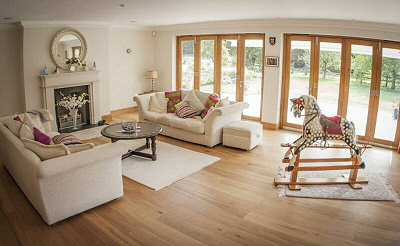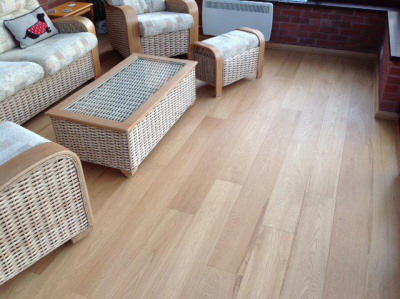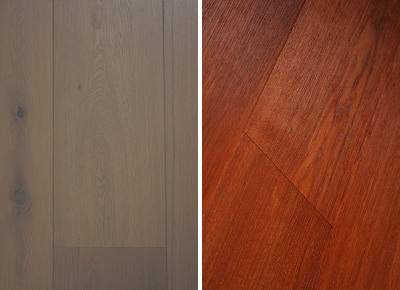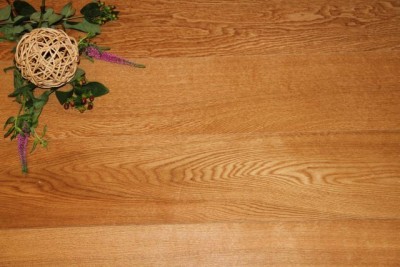Natural wood is a stylish flooring solution that can suit many interiors. If you are considering natural wood, you will soon come across technical terms that may appear to complicate the process, unless help is at hand. In this guide we aim to explain your options, should you decide to venture in the direction of natural wood during your next interior design project.
Types Of Wood Flooring
Types such as natural, solid, engineered, wood effect and others often come across confusing. Your first decision is deciding as to the most suitable type based on your project’s requirements.
Solid Wood – Floorboards of the solid type are made from 100% natural wood. When clients first think of wood flooring, the solid type is often the only one they are aware of. The solid type suits most surroundings, unless fitted in damp or humid areas. In such areas, the likes of which are the kitchen or bathroom areas, natural wood may expand when the temperature rises and contract when the temperature drops. Overtime, this instability can damage the wood.

Engineered Wood – Floorboards of the engineered type are made from 10% to 25% natural wood placed on a core of MDF, Plywood and even Softwood. The first visible layer typically 3mm to 6mm thick is made from the same natural wood as used in the solid type, though the bulk of the floorboard is made from alternative matters. This combination of materials means that an engineered floorboard can be fitted across the entire project, even in damp or humid areas and even on top of under floor heating.

Wood Effect, Laminate and Vinyl – These floorboards are made from synthetic materials such as wood fibers, plastic and even recycled materials. They contain no natural wood, but made to look similar to wood by copying visuals such as sapwood, grain markings, knots and colour. Wood effect, laminate and vinyl are substantially more affordable than real wood flooring, therefore in certain circumstances such as when the floor is to be laid on a tight budget, they are worth considering.

Colour Of Wood Flooring
After deciding on the type, comes the creative part of deciding on colour. In most circumstances, wood flooring comes in shades of golden honey. When clients come across colours such as white wood flooring, dark and even bold black they are often amazed at this outcome. In truth, over the years manufactures developed techniques to colour the floorboards to make them suitable in a greater number of projects.
White Wood Flooring – These solid and engineered white flooring are exceptionally popular in recent years. Each floorboard is painted over using diluted white paint and therefore referred to as white washed wood.

Dark Wood Flooring – These solid and engineered dark flooring are exceptionally popular in heavy footfall areas as they hide daily wear better. Using an industrial oven, the wood is baked and therefore often referred to as thermo treated wood. Depending on the length of the process, the outcome can be dark wood or even solid black.

Bold Colours – Grey, yellow and even red can be achieved. Your interior designer will know what is available and the best means to procure your desired colour.

Wood Flooring Texture
The last considering after choosing type and colour, again takes a creative form. Texture refers to the look, feel, appearance, or consistency of the wood flooring surface.
Together with colour, the look of each floorboard is also determined by grade. In its natural state, wood contains features such as sapwood, knots, grain markings and colour fluctuations. Premium grades such as Prime and Select present a uniform look in which these natural features are toned down. Country and rustic grades are the basic grades in which sapwood, knots, grain markings and colour fluctuations are widely present. It is a matter of personal taste, some people prefer a uniform look, others more rural.

The feel and appearance is traced back to your choice of coating. Coating is a chemical layer that is applied to reduce wear and tear. It comes in the form of oil or lacquered material. Oil finish wood flooring creates a smooth matt finish feel, while lacquered finish wood flooring creates a slightly textured surface, and in some cases a glossy finish. Again, it is a matter of personal taste.

We hope this handy guide has helped clarify your options. Contact interior stylist Ceril Campbell to discuss your project requirements.
Written by Jonathan Sapir, managing director of WoodandBeyond Ltd
